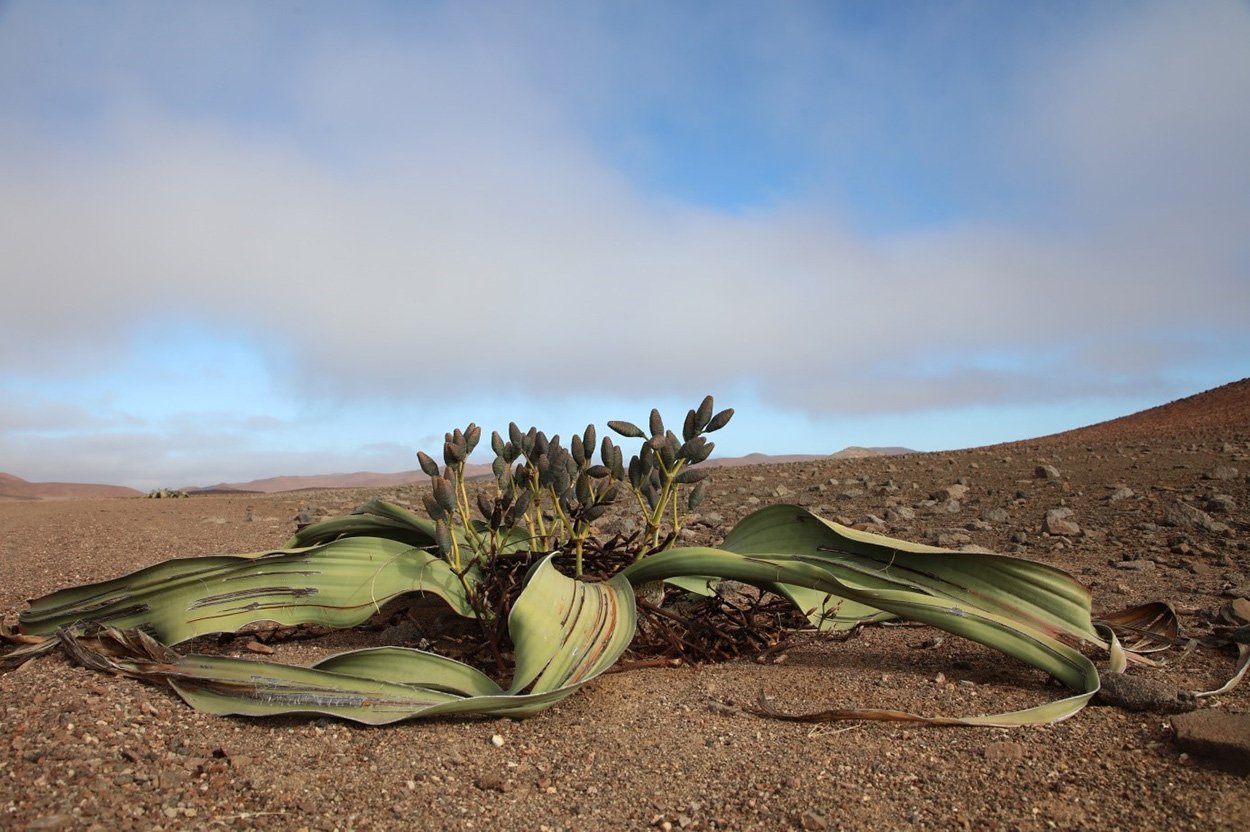
This plant looks unusual because it not only bears two meter-long leaves lying on the ground, but also cones like a conifer. In addition, it seems to grow almost lonely in the extremely dry sand landscape.
Behind the plant in our picture is a specimen of the species Welwitschia mirabilis. It is characterized by a short trunk and two leaves lying on the ground, which can grow up to eight meters long and grow back for life. In addition, male and female plants bear cones – like today’s conifers, Weltwitschia is one of the conifer-like species. Unlike most conifers, their pollen is not transmitted by the wind, but by flies and wasps.
But it’s not just their appearance that is special: While early Welwitschia plants lived on many continents more than 112 million years ago, the modern flowering plants displaced the only species still alive today in the extremely dry Namib Desert in Angola and Namibia, as is our photo shows. Despite the drought, a single specimen can survive there for more than 1,000 years.
So far, however, it has been controversial whether the rare plant species has subspecies in its limited habitat. To solve the riddle, researchers working with Norbert Jürgens from the University of Hamburg examined short DNA sequences of some specimens from over 15 populations of Welwitschia mirabilis.
Using the so-called microsatellites, the scientists were actually able to confirm that Welwitschia mirabilis has two different subspecies. “The structural analysis shows two separate gene pools, between which there is no gene flow,” the researchers say. They were able to distinguish an Angolan from a Namibian subspecies, which are separated from each other within the northern Namib.
“We were also able to prove that the plant in Angola occurs in an area twice as large as previously known,” says Jürgens. “We were also able to describe new occurrences in Namibia.” Here, the over 1000 kilometer long plant habitat is divided into ten isolated parts, which differ in their climatic and geological properties, such as soil, humidity or climate.
“This observation supports the assumption that Welwitschia has found a refuge in the Namib, but has not stagnated there, but has experienced new adaptations to the various environmental conditions,” says Jürgens. However, this “living fossil” can only withstand the conditions in the desert as long as it does not have to compete with modern flowering plants.